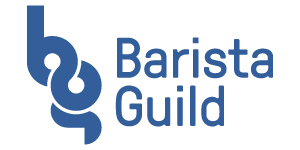Water Usage in the Cafe, at the Farm, and in the Future: Episode 1 – The Cafe
By David Fasman, BGA Membership Committee
 Water – it is perhaps the most important ingredient in coffee. It makes up 98-99% of drip coffee and 88-92% of a traditional shot of espresso. The water used for coffee has incredibly rigid guidelines – and rightfully so, considering how much of brewed coffee it comprises. Water for brewing coffee must be clean, fresh, odor free, and clear. It shouldn’t contain any chlorine, should have a TDS of 150 mg/L, a calcium hardness of 68 mg/L, total alkalinity of 40 mg/L, a PH of 7, and a sodium content of 10 mg/L. That specificity doesn’t even take into account the total mineral content of water, which can also include iron, magnesium, potassium, carbonate, bicarbonate, sulfate, and chloride.[1]
Water – it is perhaps the most important ingredient in coffee. It makes up 98-99% of drip coffee and 88-92% of a traditional shot of espresso. The water used for coffee has incredibly rigid guidelines – and rightfully so, considering how much of brewed coffee it comprises. Water for brewing coffee must be clean, fresh, odor free, and clear. It shouldn’t contain any chlorine, should have a TDS of 150 mg/L, a calcium hardness of 68 mg/L, total alkalinity of 40 mg/L, a PH of 7, and a sodium content of 10 mg/L. That specificity doesn’t even take into account the total mineral content of water, which can also include iron, magnesium, potassium, carbonate, bicarbonate, sulfate, and chloride.[1]
Looking at the science of the water necessary to brew good coffee, it is easy to see how water alone could be, and I expect much of the time is, the cause of bad coffee. The average tap water in America is 350 ppm, and can get as high as 1000 ppm in bad areas. Water over 1000 ppm is considered dangerous for human consumption.[2] So clearly water for brewing coffee requires filtration. Out of all of the filtration methods for water, there is really only one that can create water with these specifications; reverse osmosis. But reverse osmosis can create a lot of “waste” water. Older systems can waste water at a 1:1 ratio or even worse, meaning the system creates one good gallon of water for every one gallon of waste. Some of the newer systems can create 4 good gallons for every 1 wasted.
Water for brewing coffee is not the only use of water in the café – in fact it is far from it. From washing dishes and hands to mop and sanitizer water, washing off the patio, ice machines, dipper wells, and restrooms – a café’s total use of water can be pretty astounding; generally between 600-1000 gallons per day.[3] And this only accounts for water at the level of the café. In reality, it takes 53 gallons of water to produce one latte in a paper cup, literally from seed to cup.[4] The total water used, from seed to cup, for a cup of coffee is 34 gallons.[5] Over the course of a year a café can go through tens to hundreds of thousands of gallons. That’s a lot of water.
In fact it is so much water that it is essentially unsustainable. Across the United States, water and sewage rates are rising at a rate of 5-15% yearly and are projected to continue into the foreseeable future.[6] As an industry we have to work to lower water usage rates so that our costs, and the cost of our products don’t have to rise at the same rate. And also, to save water in general. So all of these facts beg the question, “How?”
Luckily for our industry, there are a lot of techniques that can substantially help to reduce water usage at the café. These include utilizing pitcher rinsers, removing or installing flow restrictors in dipper wells, installing aerators on faucets, utilizing the most efficient pre-rinse spray valve, installing water efficient dish washers, using air-cooled and not water-cooled ice machines, installing efficient toilets, utilizing the most efficient water filtration, and repurposing water if possible. Even changing just one of these items can drastically reduce water usage. In fact, “If just 5,000 cafes in the U.S. reduced their water consumption by 10% – they would collectively save about 375,000 gallons of water a day – which is over 136 million gallons annually.” And collectively those cafes would save over $1,275,000 per year.[7]
One of the easiest ways to save water at the café costs nothing. Mindfulness. If we can think about how we wash dishes, use sinks, rinse filters, brew coffee and actively control the amount of water being used, then we can affect change without any cost to the café.
Water usage in our industry, even just at the café level, is unsustainably high. It is our job as responsible members of the coffee industry to help lower usage and raise the awareness of our employers in regards to water use at the café. It’s good for the café and the customer. In the last article of this series I will discuss the implications of the rising cost and scarcity of water – but first, the next article will discuss water usage at the farm level.
[1] SCAA Water Quality Handbook [2] Environmental Protection Agency Website [3] SCAA Green Guide Module 2: Water [4] SCAA Fact Sheet: Specialty Coffee and Water Conservation [5] SCAA Green Guide Module 2: Water [6] SCAA Fact Sheet: Specialty Coffee and Water Conservation [7] SCAA Green Guide Module 2: Water
